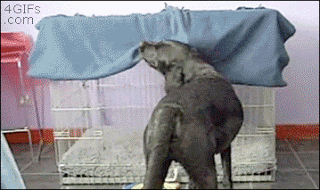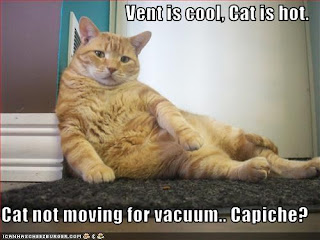Wednesdays around here are typically reserved for “Adoptables”. But, when I realized that Take Your Dog to Work Day celebrated dogs AND adoption…well.
Pet Sitters International, the world’s largest educational association for professional pet sitters, (Barks and Blooms is a member) started Take Your Dog to Work Day in 2007 to celebrate dogs, to encourage adoption from humane societies, shelters, and rescue clubs.
This year, the 15th annual TYDTWD is Friday, June 21. If your business is participating, let us know about it!
|
** PET OF THE WEEK ** What’s black, brown and sweet all over? Give up? Me! My name is Baby, and I am a very friendly Rottweiler mix. I love other dogs, and of course I love people. I was surrendered with my sister Sadie (a dachshund) because our family was no longer able to care for us. Sadie was recently adopted, so now I need to find my forever home! I am a real gentle dog and have so much to offer. I have good manners and walk well on a leash. Please stop by and visit with me soon!
|
With warmer temperatures finally coming, many dog owners are exploring options to help their pets stay comfortable.
Shaving off all that hair is probably the most popular option. Indeed, for some coat types, this is an ideal solution. Not for all.
With the exception of hard-coated terriers, dogs come in one of two coat types: single coated and double coated.
Examples of single-coated breeds are poodles, shih-tzus, bichons, etc.
Double-coated or fur-bearing breeds have coats that grow to a predetermined length. They can be further separated into open coats and closed coats.
These breeds have a hard, protective outer coat (guard hairs) and a soft, dense undercoat. Examples of open, double-coated breeds are any of the spitz-type breeds, such as Siberian huskies, Pomeranians and chows.
This coat is designed to shed snow or ice and provide maximum protection against freezing weather.
Closed, double-coated breeds have noticeably longer guard hairs, which lay down over the undercoat, sort of like a blanket. While the outer, or guard, hairs get wet, the undercoat works to keep the dog’s skin dry. Examples include golden retrievers, Australian shepherds and Newfoundlands.
Single-coated breeds can be clipped down to the skin, and the coat will grow back pretty much as it was before. The same is not true for double-coated breeds. For this reason, shaving these dogs down is not a solution to summer heat.
Think of a healthy double coat as an old-growth forest. There is a balance with different parts providing different benefits. If you clear-cut an old growth forest, there will be immediate regrowth of a lot of young trees very soon.
Unfortunately, they won’t initially be the same kind as those you cut down. Instead, the forest has to start from scratch and spend decades, first growing ground cover and softwoods that provide an environment for slower growing hardwood varieties. It takes generations before the natural balance is restored.
While on a much shorter timeline, it’s the same thing with a double-coated dog. Guard hairs represent old growth, and undercoat represents ground covering vegetation.
The act of shaving a double coat removes the dog’s natural insulation and causes his system to kick into high gear. He’ll now produce coat to protect himself from extreme temperatures, sunburn and sharp objects.
Since the top coat or guard hairs take a long time to grow, what the dog’s body produces first is soft undercoat. That’s why we hear people say, “I shaved my dog, and it grew back twice as thick and really fuzzy!”
In reality, what happens is that the original coat isn’t restored at all. What grows in instead is thick, prolific undercoat mixed with short new guard hairs. We call it false coat or coat funk.
So, why is this bad? Picture this scenario:
It’s 90 degrees outside. You’re getting dressed to go work in your yard. Are you going to put on a light cotton T-shirt and sunblock or thermal underwear and a sweatshirt?
A dog’s shaved-down false coat is like that sweatshirt. It’s dull, soft and soaks up water like a sponge. Burrs and foxtails stick like Velcro. Above all else, it’s way too thick for hot weather.
By the time that false coat grows out enough to protect the dog from sunburn, scrapes and bites (the usual job of the top coat), it is so thick that the poor dog might as well be wearing thermal underwear and a sweatshirt.
Remember, Mother Nature designed the undercoat to be extremely heat-retentive.
Do you take your dog to a grooming salon? You can request a bath and blow-out. Virtually all modern professional grooming salons have high velocity blow dryers in their work areas.
These powerhouses can literally blast the dead undercoat out of your dog’s hair after a thorough bathing with minimal brushing and combing needed.
The benefit to your dog is a healthy, balanced coat you can both live with. Sure, you could opt for the shave-down, but you’ll more than likely be back in a month or so for another “shave-down” because your dog is cooking in its own hair.
Then, if you’re like most owners who fall into this cycle, you’ll intentionally let your dog’s woolly false coat grow out all winter “for warmth,” only to have it shaved off again in the spring.
In reality, all winter long while you’re under the false notion that your dog is staying warm and dry under that thick layer of fuzz, his coat is matting, retaining water and mud and possibly even mildewing. It will stay cold and wet for hours. Do you see the vicious cycle that started?
In some cases, owners really don’t have a choice. If there’s an underlying skin condition, requiring removal of the hair, obviously shaving is the lesser of two evils.
Same applies if the coat is so matted that shaving is truly the most humane option, affording the owner a chance to start over and improve their brushing skills.
These are situations to thoroughly discuss with both your veterinarian and your groomer so you can make an informed decision.
However, if your sole motivation for shaving your dog in the spring is to “keep him cool,” you need to know that you’re actually creating a far worse situation than you think.
Aside from destroying coat integrity, shaved dogs are susceptible to a multitude of complications, including, but not limited to, alopecia, heat stroke and skin cancer, specifically Solar-induced Squamous Cell Carcinomas and Dermal Hemangiosarcomas.
Sometimes, these complications are not reversible.
When the days get long and hot, you can strip down to shorts and a tank top, but your cat has to wear a fur coat all year long. So what can you do to keep your feline friend comfortable during the summer?

























